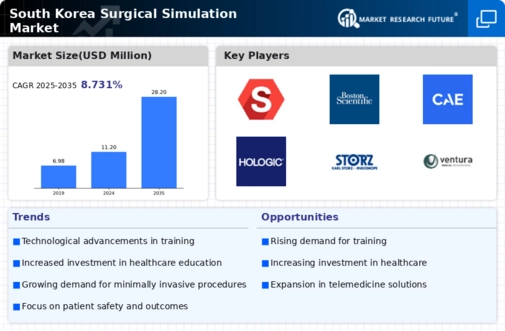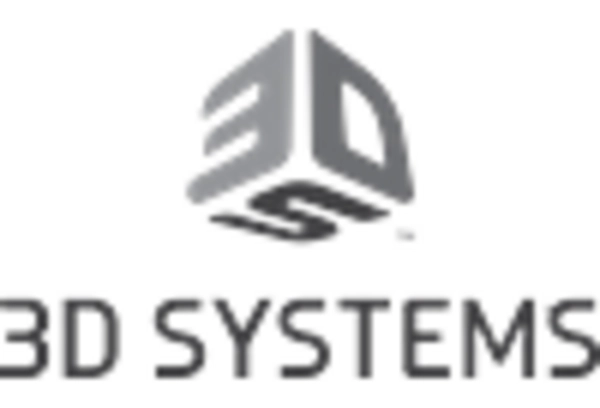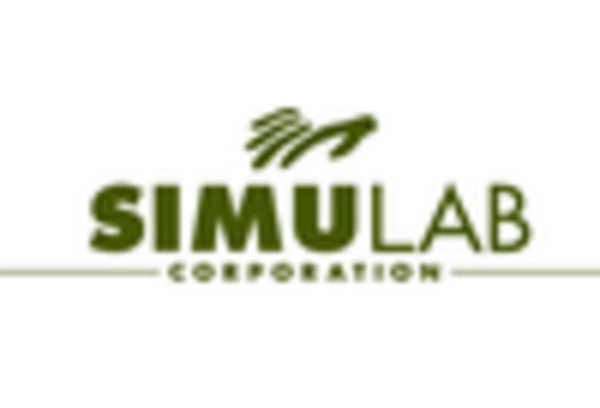Increased Focus on Patient Safety
In South Korea, there is an increasing focus on patient safety, which is significantly influencing the surgical simulation market. As healthcare providers strive to minimize surgical errors and improve patient outcomes, the demand for simulation-based training is rising. Simulation allows surgeons to practice and refine their skills, thereby reducing the likelihood of complications during actual procedures. The surgical simulation market is projected to grow as hospitals and clinics prioritize patient safety initiatives. According to recent data, institutions that implement simulation training report a 25% reduction in surgical errors. This emphasis on patient safety is likely to drive investments in simulation technologies, further propelling the growth of the surgical simulation market.
Collaboration Between Academia and Industry
Collaboration between academic institutions and industry players is emerging as a key driver for the surgical simulation market in South Korea. Such partnerships facilitate the development of cutting-edge simulation technologies and training programs that meet the evolving needs of healthcare professionals. By leveraging academic research and industry expertise, these collaborations can lead to innovative solutions that enhance surgical training. The surgical simulation market is expected to benefit from this synergy, as new products and methodologies are introduced. Furthermore, joint ventures often result in increased funding for research and development, which can accelerate the growth of the market. This collaborative approach is likely to foster advancements in simulation technologies, ultimately improving surgical education.
Integration of Virtual Reality Technologies
The integration of virtual reality (VR) technologies into the surgical simulation market is transforming the landscape of medical training in South Korea. VR offers immersive experiences that allow surgeons to practice procedures in a realistic setting without the risks associated with live surgeries. This technology not only enhances the learning experience but also improves retention of skills. The surgical simulation market is expected to benefit significantly from this trend, as VR-based simulations are gaining traction among medical institutions. Reports suggest that the adoption of VR in surgical training could lead to a 30% improvement in skill acquisition rates. As more institutions invest in VR technologies, the surgical simulation market is likely to expand, driven by the demand for innovative training solutions.
Rising Demand for Advanced Training Solutions
The surgical simulation market in South Korea is experiencing a notable increase in demand for advanced training solutions. This trend is driven by the need for healthcare professionals to enhance their skills in a safe and controlled environment. As surgical procedures become more complex, the necessity for effective training tools becomes paramount. The market is projected to grow at a CAGR of approximately 15% over the next five years, indicating a robust interest in simulation technologies. Furthermore, educational institutions and hospitals are increasingly adopting simulation-based training programs, which are seen as essential for improving surgical outcomes. This rising demand for advanced training solutions is likely to propel the surgical simulation market forward, as stakeholders recognize the value of investing in high-quality simulation tools.
Growing Investment in Healthcare Infrastructure
The The market is poised for growth due to the increasing investment in healthcare infrastructure.. The government and private sector are allocating substantial resources to enhance medical facilities and training programs. This investment is aimed at improving the overall quality of healthcare services, which includes the adoption of advanced surgical simulation technologies. As hospitals upgrade their facilities, the demand for high-quality simulation tools is expected to rise. Recent reports indicate that healthcare spending in South Korea is projected to increase by 10% annually, which could significantly impact the surgical simulation market. This growing investment in healthcare infrastructure is likely to create new opportunities for simulation providers, driving market expansion.

















Leave a Comment